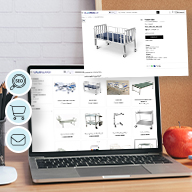Do You & Your Employees Need Learning & Development Programmes?

Learning & Development
486 week ago — 8 min read
We’re sure that every time you open your mail these days, you see a number of offers for services in learning and development, including training, coaching and mentoring.
Learning and development for corporates and SMEs is a big industry for several reasons. These include rapidly changing technology and evolving consumer and B2B needs that require businesses to think fast and turn around quickly.
Chances are you’ve deleted most of these emails without opening them, but you have read one or two. And you’re a little interested, but you don’t know what L&D really means for you and your company.
Here’s a brief guide.
Often, you’ll find mailers from L&D organisations using words and terms like these:
- Education
- Training
- Training & Development
- Learning & Development
- Coaching
- Mentoring
All these terms seem similar, but actually they’re not.
EDUCATION - Education prepares you to be able to perform jobs in the future by developing the intellect and providing knowledge. This knowledge may have a direct, indirect or little impact on your future job, but it is the base for your future life. Education also broadens your horizons and gives you perspectives. It is a lifelong process.
TRAINING – Training usually focuses on a particular job and the skills (including soft skills) you require to perform that job well. Often initiated by a company, training is usually for the immediate future. In ancient times, training was practised through guilds, where young people were apprenticed to a master and learnt on the job. On acquiring these skills, they were initiated into the trade. This practise gave way to training for skill enhancement and took on a more formal classroom approach.
COACHING – Coaching is a training or development activity in which a person called a coach supports a learner, called the coached (informally also referred to as the coachee), in achieving a specific personal or professional goal. Coaching is usually an intense one-to-one activity, unlike the one-to-many aspect of education and training.
DEVELOPMENT - Development activities are not job specific – they are related to the growth of the individual and the organisation.
MENTORING – This is a one-on-one personal developmental relationship in which a more experienced or more knowledgeable person helps to guide a person who is less experienced or less knowledgeable. Mentoring is accompanied by a high sense of ownership by the mentor and is neither obligatory, nor contractual.
A typical training intervention goes through some or all of these stages
Triggering Event – The triggering event could be a new client acquisition, the introduction of a new product or even an issue related to customer complaints. Some companies proactively work out a training calendar to develop their people.In such cases the triggering event is the date itself.
Training Needs Assessment/Analysis – Once a basic need is felt, a formal assessment of the training needs is done via a Training Needs Assessment or Training Needs Analysis (TNA). The TNA uses a mix of vehicles such as:
- A formal questionnaire administered on intended participants
- Observations by assessors and content teams
- Feedback
- Client
- Peer
- Superiors
- Subordinates / Reports
- One-on-one meetings with stakeholders
- Mystery shopping
- Any other means that can throw light on development needs
Content Creation – This is usually done with the help of a content team that specialises in instructional design. Instructional design is an art and a science that uses a host of principles, models and theories which we will discuss in subsequent articles. This results in training content. The instructional design team uses the services of and works closely with Subject Matter Experts (SMEs) to get more in-depth knowledge of the subject.
Training Delivery – The training delivery can happen through various online and offline means and is dependent on the nature of the intervention as well as the group size etc. The most often used methods include:
- On the job training – This is used in situations where live monitoring and training is required. A process in a call centre for instance may require the trainer to observe, demonstrate and give inputs. This is usually a one-on-one method.
- Classroom training – This is the most common method of training – a one-to-many method.The training is delivered by a trainer or group of trainers to a whole batch of participants. Emphasis is on group learning and involves a mix of inputs, activities and simulations.
- Online training – A recent phenomenon compared to the other methods, this is catching on. This could be instructor-led or self-paced.
On The Job Monitoring – This could be a pre-training (assessment) or post-training module. The trainer focuses on the implementation of concepts that were taught in class and their application / adoption.
Mystery Shopping / Mystery Audits– On the job monitoring is a good method to ensure that the concepts taught are actually being implemented. However, participants often adhere to what has been taught only because they are aware that they are being monitored. Mystery shopping, where the participant does not know that the customer talking to them is a plant, is a better test that helps monitor the true efficacy of the training and implementation.
Are Training Programmes Effective?
By and large, training programmes can be very effective in:
- Meeting the objective in part if not completely
- Reinforcing or changing attitude and behaviour
- Providing much needed relief from the routine tasks that employees are expected to perform (many organisations make the training enjoyable)
- Infusing energy into an otherwise mundane assignment or job
- Boosting individual and team confidence
- Fostering camaraderie and bonhomie
- Acting as an incentive – Training programmes are often seen as perks. A good training programme is a break from the routine. When the programme is residential, it becomes all the more attractive for the participants.
Conversely, some programmes can be seen as irritants. This could be due to many reasons:
- The facilitator’s reputation – Word of mouth from previous attendees
- The subject itself – Often the subject might seem boring, routine or repetitive. It may also be perceived as unimportant.
- The methods and message used to enrol participants – This plays a key role in many programmes.
- The psychological aspect of being nominated for a programme, implying (incorrectly) that the candidate is “weak” in a particular area
In all these situations, communication plays an important role in getting enthusiastic participation.
(This is the first in a series of articles about learning and development.)
Posted by
GlobalLinker StaffWe are a team of experienced industry professionals committed to sharing our knowledge and skills with small & medium enterprises.
Most read this week
Trending
Entrepreneurship 1 week ago















Comments
Please login or Register to join the discussion